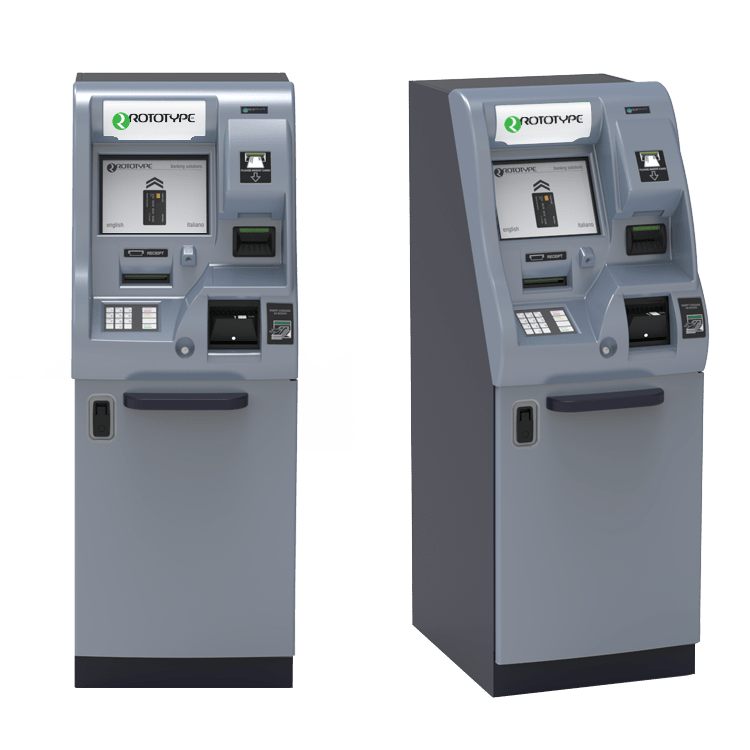SELF SERVICE KIOSK FOR CHEQUE DEPOSIT
In the banking world, the 21st century has opened the doors to a truly important innovation in terms of cheque truncation, allowing physical cheques to be replaced by optically-scanned images, which currently affects cheque transactions all over the world, leading to significant benefits in terms of ROI for banks and Financial Institutions that deployed the newest technologies for cheque scanning and image transfer, and also for the environment thanks to the reduction in costs brought about by the suppression of cheque transportation.
Consequently, cheque deposit techniques have dramatically changed and, in recent years, several machines for the automated deposit of cheques have been placed alongside ATM cash dispensers inside bank lobbies.
As a side effect of the increasing automation, the rate of frauds committed through cheque alteration, which took advantage of the absence of visual inspection by an individual, has also increased, convincing National Bank authorities to quickly issue directives in order to improve security features introduced at both cheque design and printing level. CSD 2002/EC is an automated cheque deposit kiosk that, thanks to its options, fully complies with the ever-increasing security requests/demands and is hence suitable for the most advanced clearing systems in existence.
Customers, after identifying themselves by means of their cards, are invited to introduce their bundle of cheques through the feeding shutter, without worrying about the alignment, and in less than a couple of minutes, for 10 cheques introduced they will receive a printed receipt showing all the details of the transaction, including a miniaturized picture of each deposited cheque.
Cheque images collected by the kiosk comply with IQA processing standards for the immediate identification and rejection of cheques in doubt ensuring a smooth clearing process.
Optionally, the kiosk can collect an additional image of the cheque taken under UV light in order to highlight the presence of cheque security features printed by invisible ink.
Any kind of alteration of the cheque content will cause a subsequent alteration in security features that, upon depositing the cheque, can be easily detected visually or automatically from the scanned image, by a special software especially conceived to do this, which may in this case re-direct the tampered cheque to the return slot.
Reliability, easy maintenance, performances, and an attractive design complete the “strengths” list of CSD 2002/EC.
Main features
The CSD 2002/EC kiosk is designed in compliance with regulations reducing discrimination against people with disabilities and it typically includes a 12” LCD with touch screen, a motorized EMV-approved Card Reader, a VISA PCI Encrypting Pin pad, a transaction thermal printer and a backlight panel suitable for customization with institution's logo. It can process up to 30 cheques for each deposit transaction thanks to its accurate feeding and alignment system equipped with a staple detector and with a double document detector which makes any documents that have been misfed immediately return back into the input slot.
Aligned cheques enter the MICR decoder which autodetects the encoding type (E13B or CMC7) and applies neural technology in order to achieve the highest level of immunity to noise and printing defects and hence ensures the highest possible level of accuracy.
Optionally, an OCR reader can be installed for processing non-MICR codelines or MICR ones as well, in order to maximize the decoding performance by MICR/optical joint codeline comparison.
Cheques can be, autonomously or under host control, stamped on the front with a rotary fixed stamp and/or endorsed on the rear with a five-line text printer before entering the image scanning unit.
The image-scanning unit is made up of front and rear contact sensors that can take 200 dpi pictures in 256 grey levels, 24 bit full colour and additionally under UV light.
Cheques end their flow in the stacker box, which is capable of sorting 2000 cheques over four different addressable bins or can be moved to the return slot or capture box in case of a failed authorization from the host side.
Thanks to its flexibility, CSD 2002/EC adapts very well to various requirements related to host interaction.
In fact, the cheque flow can be synchronized with the remote host for the codeline validation, as well as for cheque image validation by means of a “single cheque” escrow station allowing to place the cheque awaiting the accept or reject command in standby, before re-directing it to the proper path.
In combination with “preview mode” cheques are neither stamped nor endorsed during the first run.
Subsequently, in case of acceptance, they may be re-directed/re-sent back for endorsing and re-scanning in order to include the endorsement in the archived images, and then stacked in the collection box or, alternatively, in case of invalid cheques, they may be returned to the customer without any endorsement.
Software
The kiosk has been designed in compliance with the CEN/XFS standard 3.30 (and backward compatible with XFS 3.20).
A sample Windows application displaying the functionality of the entire kiosk is provided as well as a simple service tool for testing relevant commands to be sent to the transport unit for testing purposes.
Upon request, Rototype can develop customized software systems for detecting the presence of cheque security features.


